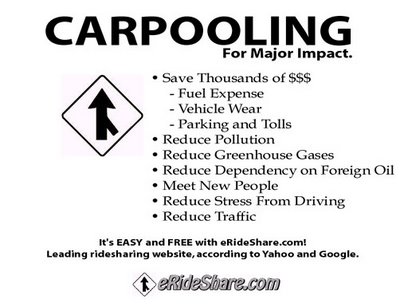Reducing Our Carbon Footprint
Tips To Reduce Your Carbon Footprint
The United States is the world’s single largest contributor to global warming, with average annual emissions of 19.6 tons per person? Five times the world average of 3.9tons per person.
Here are some tips on reducing our carbon footprint.
Replace light bulbs:
Identify frequently used light fixtures and install compact fluorescent bulbs
Check the temperature setting on your water-heater:
Reduce the setting to 120°F (typically the “warm” setting; or halfway between the low and medium settings), if it is not already set to that temperature.
Check the settings on your appliances:
Where the option is available – and is not already selected — select the energy-saving setting on your refrigerator, dishwasher, washing machine and other major appliances.
Check your thermostat settings:
During the heating season, set the thermostat lower, especially at night or when rooms are unoccupied. During the cooling season, set the temperatures higher. If you have a programmable thermostat you can automate the daily settings.
Check shower heads and faucets:
Determine whether any of your shower heads are models that use more than 2.5 gallons per minute. If so, order low-flow shower heads. Check that the bathroom and kitchen water faucets have aerators. Order an aerator for each faucet that does not have one and that can accommodate one. These steps will reduce your use of hot water – and your use of energy to heat that water.
Turn off appliances that you are not using: [I can hear my mom now….]
Switch off TVs, computers, lights, etc. that are not being used and unplug items on “standby” (that use electricity even when not being used) , including TVs, video and audio systems, computers, and chargers (for cell-phones and other electronic equipment).
Check car tires for proper inflation:
This can improve gas mileage. The appropriate air pressure typically is listed on the door-pillar on the driver’s side, on the inside of the glove-compartment door or in the vehicle manual.
Consider carpooling or use mass transit to work or events:
Replace your vehicle with one with better mileage:

Image: www.queensjournal.ca
Go paperless:
See my post on: Reducing paper
Go solar:
See post on solar water heaters
Add insulation and seal air leakage in your house:
See my previous posts:
Where insulation is needed the most
Bring a travel cup or use paper vs. Styrofoam:
See my post on Reduce, Reuse and Recycle
Replace older appliances with high-efficiency units:
There is much more you can do to reduce your household carbon emissions. Find out more about your emissions and where you can best reduce them by using an online “carbon calculator.” See the list maintained by the U.S. Environmental Protection Agency
Source: worldwildlife.org











